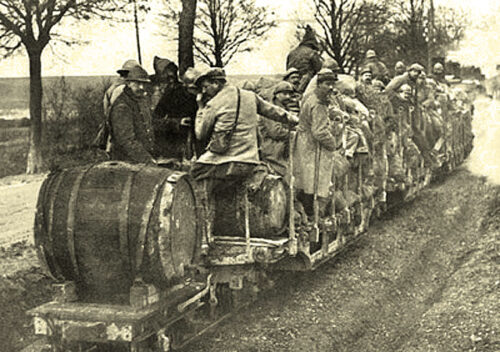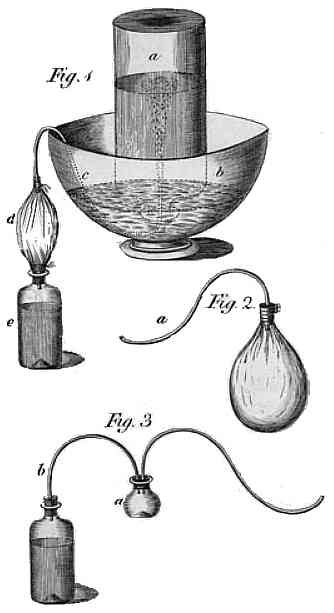The History Of Packaging: From Ancient Times To The Future
Packaging has become an important part of our lives. It is used to store, protect and transport goods. The evolution of packaging can be traced back to the early days of manufacturing.
In ancient times, humans used natural materials to package their goods. These materials included animal skins, woven cloth, and wooden crates. As civilization progressed, people began to use more durable materials to package their products. This led to the development of packaging technologies such as paper, cardboard, and plastic.
The evolution of packaging can be traced back to the early days of manufacturing.? Today, the packaging is a vital part of our economy and has played a major role in the development of our society.
The Early Days of Packaging – History Of Packaging
The origins of packaging can be traced back to prehistoric times. Early humans used materials such as sticks, stones, and clay to store food.

this far back in history, we can say with certainty that the Ancient Georgians were using these large, beeswax-coated, earthenware vessels as early as 6,000 BC.
So what makes a kvevri so special? Aside from being the oldest storage vessels we’ve discovered to date, they were used in every stage of wine production, from grape crushing to aging.
They would place the food in small caves or in hollowed-out trees. Over time, people began to use containers made out of different materials, such as pottery and animal skins.



This is a water carrier made from the skin of a wallaby. On the left, the skin of the wallaby’s neck has been drawn together and on the right three knots are visible. It is brittle and cracked in appearance. It is 40 cm long x 16 cm wide x 10.5 cm deep.
Skin carriers of this type were made by First Nations people to carry substantial quantities of water through arid and semi-arid areas. This water carrier could have held approximately 6 L of water, making it a valuable resource in inland Australia. Its base is permanently sealed with knotted twine and tanned with resin to prevent water from escaping when the skin is carried upright. The neck is tied with twine, which would have been untied for access to the water.
One of the earliest examples of packaging is a wine jar from Greece that was found dating back to the 3rd century BC. The jar was sealed with a wax seal and had a handle on top. The wine was stored inside the jar and could be easily transported.
In the Middle Ages, Europeans began using wooden barrels for storing food. Barrels were filled with different types of foods, such as vegetables, fruits, grains, and meat products. Wine, oil, and other goods were also stored in barrels.

French Soldier carrying wine in barrels
The Development of Paper Packaging
Paper packaging first became popular in the 16th century. At this time, Europeans were beginning to colonize new areas of the world and needed a way to transport food and other goods. Paper was a natural choice for packaging because it was lightweight and easy to transport.
One of the earliest examples of Glass packaging is a wine bottle from France that was found dating back to the 1560s. The bottle was made out of glass and had a wooden cork inside it. Wine could be easily poured into the bottle by using the cork as a stopper.

This bottle, possibly a version of the hanging leather pilgrim flask used during journeys, would have been used to cool wine in a larger container of water and, although few have survived, was presumably quite a commonly seen form at one time. The arms within a shield on the side are those of Enrique of Aragon-Segorbe, lord of Paterna, or of his son Alfonso, who succeeded him as lord of Paterna in 1516.
In the 18th century, paper packaging began to be used for other types of products as well. One example is a paper package that was used to store tobacco. This package was made out of paper and had a wireframe inside it. Tobacco could be easily stored in the package and smoked later.
The Development of Plastic Packaging
Plastic packaging first became popular in the 1950s. At this time, plastic was a new type of material that was being developed. Plastic was light-resistant, increase the shelf-life, and could be easily molded into different shapes.
One of the earliest examples of plastic packaging is a milk bottle from France that was found dating back to the 1850s. The bottle was made out of glass and had a window on top. Milk could be easily poured into the bottle by using the glass window as a stopper.
In the 1960s, plastic began to be used for other types of products as well. One example is a plastic package that was used to store frozen food. This package was made out of plastic and had a wireframe inside it. Frozen food could be easily stored in the package and eaten later.
The Development of Paperless Packaging
As technology has advanced, so has the way packaging is delivered to consumers. In recent years, there has been a growing trend toward paperless packaging.
One example of paperless packaging is packages that are delivered to consumers through an app. One example of an app that delivers packages is Amazon Prime Now. Amazon Prime Now offers customers the ability to order items from local stores and have them delivered to their homes within minutes.
Another example of paperless packaging is packages that are delivered to consumers through the internet. One example of an online store that offers this type of delivery is Amazon. Amazon allows customers to purchase products online and have them delivered to their homes within minutes.
The Development Of Boxes And Containers
From ancient times to the present, people have been packaging and shipping products. The development of boxes and containers has come a long way, from simple hand-made containers to modern industrial packing machines. This article looks at the history of packaging, from ancient times through to the future.
The earliest known container was a pottery jar filled with wine that was buried in the ruins of Pompeii in 79 AD. The Romans used this jar as an example of excellent container design, which they copied when they developed their own pottery industry.
Container design changed significantly with the development of industrialized production in the 19th century. Prior to this time, products were typically produced in small quantities and were not packaged for shipment or sale. As a result, most containers were designed specifically for these purposes.
Container design changed significantly with the development of industrialized production in the 19th century. Prior to this time, products were typically produced in small quantities and were not packaged for shipment or sale. As a result, most containers were designed specifically for these purposes.
The first commercially successful shipping container was invented by Sir William Parry in 1852. This container was made from wood and could hold up to 20 tons of cargo. However, it was not until 1925 that the first steel shipping container was developed by George Steers Jr. This container revolutionized shipping because it reduced the amount of cargo that needed to be transported on ships, making them much faster and more efficient.
The development of modern industrial packaging machines has allowed manufacturers to produce even more innovative packaging designs than ever before. Today, packaging machines can produce nearly any type of packaging imaginable, from boxes and bottles to blister packs and cartons.
As the world continues to become more industrialized, it is likely that container design will continue to evolve in order to meet the needs of today’s consumers. We can expect to see even more innovative and efficient packaging designs in the future as manufacturers strive to provide the best possible service to their customers.
The Modern Era of Packaging
The Modern Era of Packaging began in the 1800s when merchants started wrapping products in paper and then sealing them with wax or cork. The first adhesive packaging was made from animal glue which was used to attach cigars. The modern era of packaging continued into the 20th century when plastics were invented and became popular because they were strong, durable, and easy to manufacture. In the early 21st century, new materials such as bioplastic and carbon fiber began to be developed as alternatives to traditional plastic packaging materials. As the Modern Era of Packaging continues to develop, we are likely to see even more innovative and unique packaging designs in the future.
The Future of Packaging
There is no doubt that the future of packaging looks very promising. Recent trends suggest that more and more consumers are choosing paperless and plastic-less packaging options. Additionally, advances in technology are allowing for even more innovative packaging designs. The future looks bright for packaging fans everywhere!
Secret code of packaging – its pack-aging
Packaging has come a long way since its inception. It has evolved into an important part of our lives and will continue to do so in the future.
Packaging has come a long way since its inception. It has evolved into an important part of our lives and will continue to do so in the future. Ancient Egyptians used papyrus to wrap items for storage, while the Greeks and Romans used large clay containers to store food. The modern bottle was invented in 1795 by an Englishman named Joseph Priestley, and it took off soon after because it was a convenient way to transport liquids.

The 18th Century Chemist Who Discovered Oxygen and Changed Champagne and Beer Forever
Today, Packaging history plays an essential role in our economy and society. It helps us store delicate items like food or cosmetics, protects products from damage during transport, and makes them easy to find and purchase. Packaging is also responsible for making products more appealing to consumers, helping them identify which brands they should trust. As the world becomes increasingly digital, packaging will continue to evolve in order to meet the needs of consumers. We can look forward to seeing even more innovative and unique designs in the future.






